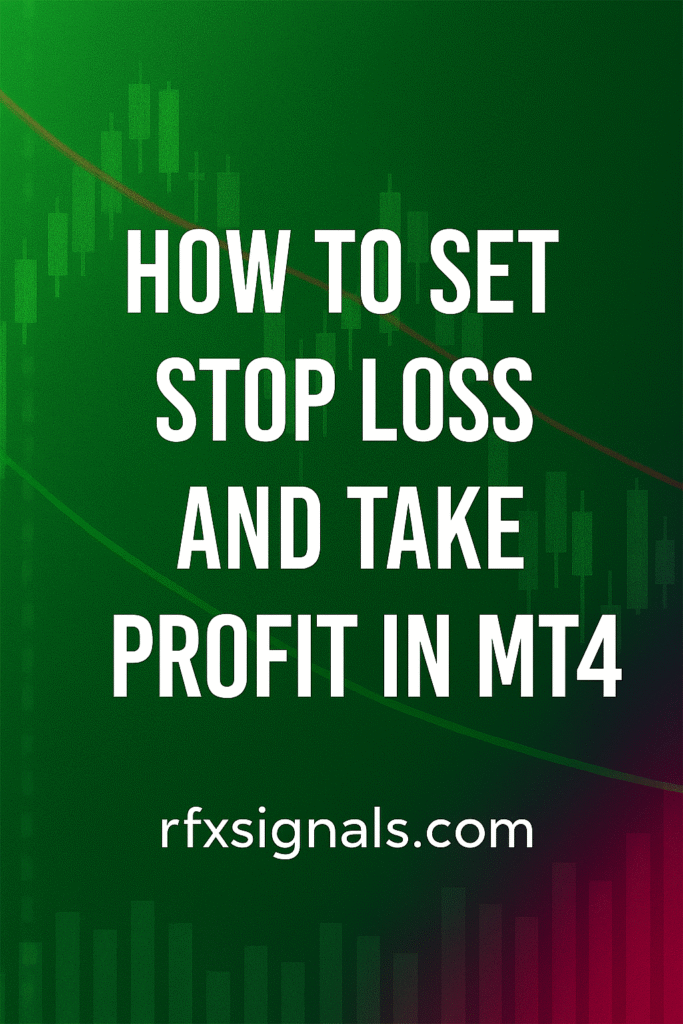
How to Set Stop Loss and Take Profit in MT4 — A Practical & Repeatable Method
Correct stop loss (SL) and take profit (TP) placement turns a guess into a plan. In this guide you’ll learn how to calculate SL and TP using volatility, ATR, support & resistance, and risk-percentage rules — then how to place them in MetaTrader 4 (MT4) and use trailing stops, OCO logic and platform features to manage trades professionally.
Quick summary — what you’ll learn
- Step-by-step MT4 placement of Stop Loss and Take Profit
- How to calculate SL/TP with ATR, S/R, and % risk
- Trailing stop methods, OCO setups, and broker considerations
Why SL and TP are not optional
Discipline is defined by rules. A stop loss limits downside and defines trade risk; a take profit defines reward and stops emotional greed. Without SL/TP you trade with an undefined loss potential and are more likely to make impulsive decisions.
How to decide SL — 4 practical methods
Choose a method that fits your strategy and time frame. Below are four widely used, tested approaches.
1) Risk-percentage (money management) method
Decide the % of your equity you will risk per trade (e.g., 0.5–1%). Convert that money risk into pips using position size calculator to get the SL distance. This method ensures consistency across trades.
2) ATR (Average True Range) volatility method
ATR measures recent volatility. A common rule: set SL at 1.0–1.5 × ATR(14) for your timeframe. ATR adapts to changing market conditions and prevents stops that are too tight in choppy markets.
3) Structure-based (Support/Resistance) method
Place SL beyond a clear structure (swing low/high or order block). For example, for a long trade place SL a few pips below the last swing low or the lower wick of a bullish rejection candle.
4) Time-based / session-aware method
During high-volatility events consider wider stops (using ATR) or avoid trades. For session-specific trading (e.g., London open), place stops based on recent session highs/lows.
How to calculate TP — common approaches
Take profit should be aligned with your SL so you maintain a favorable risk-to-reward (R:R). Common approaches:
- Fixed R:R: 1:2 or 1:3 depending on your win-rate.
- Structure targets: next S/R level, fibonacci extension, or pivot points.
- Volatility target: set TP at a multiple of ATR (e.g., 2×ATR) when trading momentum.
- Partial take & trail: take partial profits at first target and trail the rest with an ATR-based trailing stop.
Putting it together: example calculation (step-by-step)
Example: Account ₹100,000, risk 0.5% = ₹500. Trading EUR/USD, account currency in INR — calculate value per pip for chosen lot, then determine SL pips allowed by risk. Suppose 1 mini lot equals ₹70/pip; max SL = ₹500 / 70 ≈ 7 pips. Use ATR or structure to validate — if ATR(15min) = 12 pips, 7 pips is too tight → reduce size (smaller lot) or avoid the trade.
How to place SL & TP in MT4 (step-by-step)
Placing SL/TP when opening a new order
- Open MT4 → New Order (F9) or click the market watch pair then "New Order".
- In the order window set "Volume" (lot size).
- For Market Execution set Stop Loss and Take Profit fields before clicking "Buy" or "Sell". You can type absolute prices or pip offsets (on some brokers).
- Click "Buy" or "Sell" — SL & TP will be registered with the order on the server (check "Trade" tab for confirmation).
Adding or modifying SL/TP on an open position
- Open "Terminal" (Ctrl+T) → "Trade" tab → right-click on the trade → click "Modify or Delete Order".
- Enter new Stop Loss and/or Take Profit price levels (you can drag the order line on the chart if your broker supports chart editing).
- Click "Modify" to send the update to the broker. Verify the change on the "Trade" tab.
Using chart drag (quick method)
On many MT4 installs you can drag the SL/TP lines on the chart: left-click the order line, drag the stop or target to the desired price and release. Confirm by checking the Trade tab.
Trailing stops in MT4
MT4 has a built-in "Trailing Stop" function that runs on your terminal (not server-side) — it requires your MT4 to be running. To enable: right-click the trade in the "Terminal → Trade" tab → Trailing Stop → choose a distance. For server-side trailing stops or advanced rules use an Expert Advisor (EA).
OCO logic and advanced order management
MT4 does not natively support server-side OCO (One Cancels Other) for all brokers. Many traders use EAs or VPS-based scripts that place paired orders (stop-entry and limit-entry) and automatically cancel the other when one activates. If your strategy relies on OCO, test the EA thoroughly in a demo account.
Broker & platform considerations
- Confirm minimum SL distance required by broker (some brokers enforce minimum pip distance from market price).
- Check whether your broker stores SL/TP server-side — this protects you if your MT4 terminal disconnects.
- Account currency matters for pip-value and position sizing calculations — use MT4 calculators or spreadsheet templates.
Practical tips & best practices
- Always calculate position size after deciding SL — risk then size, never size then risk.
- Avoid arbitrary round-number stops; base them on structure or volatility.
- Use partial profits to lock gains and reduce psychological stress on large swings.
- Journal every trade: entry, SL, TP, size, R:R, and outcome — iterate on rules.
Backtesting & demo testing
Before applying rules live, backtest SL/TP rules on historical data and forward-test in a demo account. Timeframes and pairs behave differently; what works for EUR/USD 15m may not suit USD/INR or exotics.
SEO-friendly internal & external linking strategy
To help SEO and user navigation, link this article to related pages on your site and cite authoritative external sources:
- Position Sizing Calculator — How Much To Risk (internal)
- ATR Indicator Guide — Using ATR For Stops (internal)
- Investopedia — Stop-Loss Order (external)
Final checklist — before you click BUY or SELL
- Have a clear SL based on ATR or structure and a TP that maintains desirable R:R.
- Calculate lot size from risk, not the other way around.
- Verify broker minimum SL distance and whether SL is server-side.
- Use partials or trailing stops to manage winners and protect profits.
Want our MT4 SL/TP spreadsheet & templates? Send a message and we’ll share a ready-to-use sheet and an MT4 template.
Request Template (WhatsApp)













